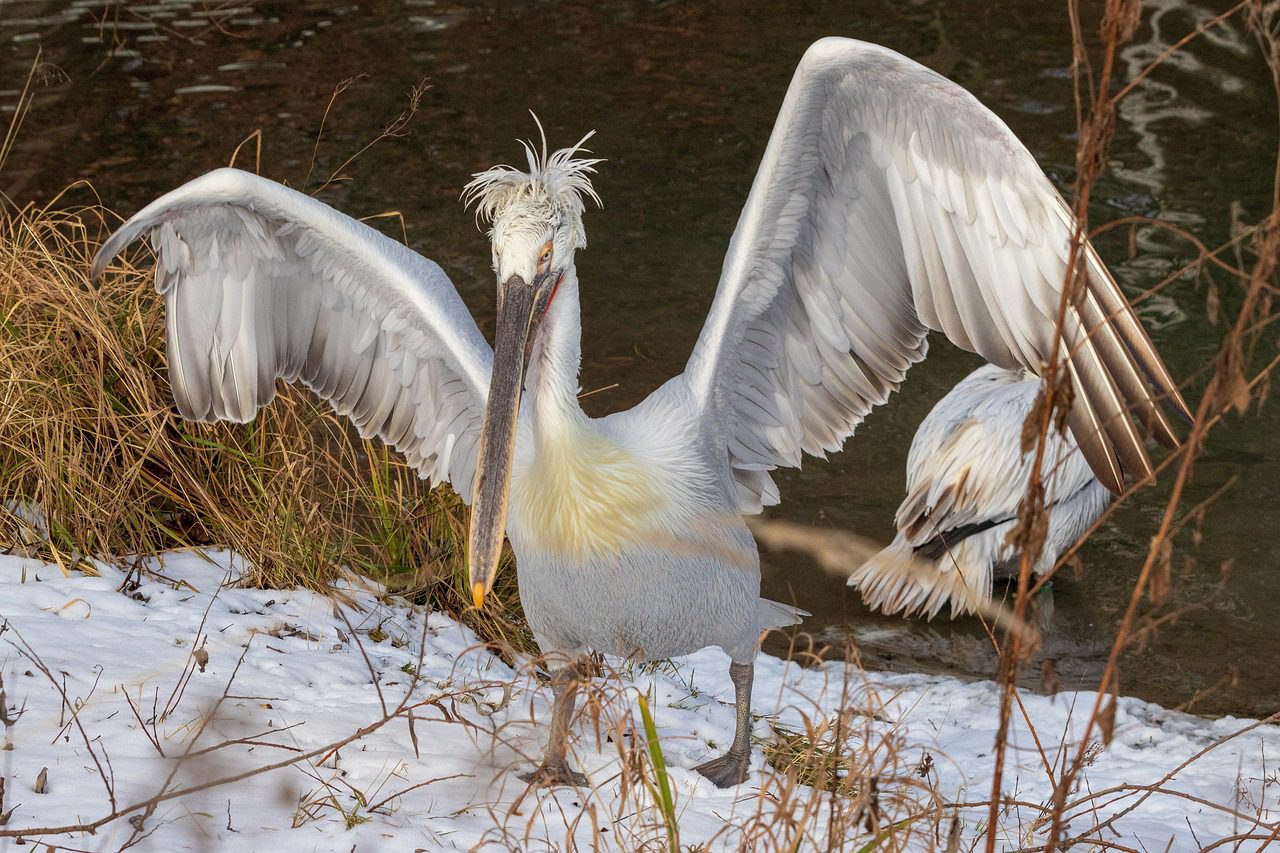July 27, 2023 — An interview published by the Great Salt Lake Collaborative revealed news that the pelican population at Great Salt Lake’s Gunnison Island has disappeared.
revealed news that the pelican population at Great Salt Lake’s Gunnison Island has disappeared.
The north arm of the Great Salt Lake, known for its hyper-saline environment, has served as a home to one of the world’s largest breeding grounds for the American white pelican at Gunnison Island. Monitored by the Utah Division of Wildlife Resources , Gunnison Island at its peak hosted nearly 20,000 nesting pelicans. But now, to the surprise of scientists and officials alike, the pelican population has abruptly vanished.
, Gunnison Island at its peak hosted nearly 20,000 nesting pelicans. But now, to the surprise of scientists and officials alike, the pelican population has abruptly vanished.
During a recent survey for phalaropes led by the Utah Division of Wildlife Resources, it was discovered that the vast pelican colony had all but disappeared. Aimee Van Tatenhove, a PhD student in the Wildland Resources Department at Utah State University and a science reporter for Utah Public Radio focusing on Great Salt Lake issues, spoke with Erin Lewis about the findings.
A Vanishing Act: No Pelicans in Sight.
When asked about the shocking discovery, Van Tatenhove said, “The people doing the flight flew by Gunnison Island and they noticed the pelicans were gone — like, they’re gone gone.” This alarming news has spurred a flurry of activity as the Utah Division of Wildlife Resources and researchers scramble to understand the cause of the sudden abandonment.
A Silent Colony: Struggling Survivors.
The abandoned colony isn’t entirely bereft of life, however. A recent visit confirmed the presence of approximately 40 chicks, a paltry number when compared to the teeming masses usually seen. “But compared to the number of chicks you’d expect to see in a good year, this is essentially nothing,” Van Tatenhove said.
Theories Abound: Coyotes, Disease, and Shifting Environments.
The cause behind this sudden abandonment remains a mystery. Theories range from a sharp increase in coyote activity on the island, now a peninsula due to falling water levels, to a possible outbreak of avian influenza. “Theory is that some of the pelicans got sick, and other pelicans at the colony noticed and left as a reaction to that,” explained Van Tatenhove . She also noted that while the presence of coyotes has been confirmed since 2016, their presence alone probably didn’t lead to total abandonment.
. She also noted that while the presence of coyotes has been confirmed since 2016, their presence alone probably didn’t lead to total abandonment.
Water levels have also come under scrutiny as a potential factor. The Great Salt Lake has been shrinking since the 1980s due to water diversions and drought, a trend that might have contributed to the declining pelican numbers. Van Tatenhove pointed out that the recent surge in water levels didn’t reach the colony due to the raised causeway berm, leaving the colony vulnerable to terrestrial predators and the harsh, mud-ridden landscape.
An Uncertain Future: Pelican Population Concerns.
Pelican populations have demonstrated flexibility in the past, moving between breeding colonies or taking years off from breeding. However, the sheer size and productivity of the Gunnison colony means its loss could have far-reaching impacts on the regional pelican population. “But if this becomes the norm and Utah’s pelicans quit breeding in the state entirely, we may see significant impacts,” warned Van Tatenhove.
As scientists, researchers, and officials from the Utah Division of Wildlife Resources work to unravel the mystery behind the sudden exodus, the future of the American white pelican population hangs in the balance. Will they return to their previous breeding grounds, or will this disruption become the new norm? Only time, and the tireless efforts of researchers like Van Tatenhove and her colleagues at the Great Salt Lake Collaborative, will tell.


Leave a Reply